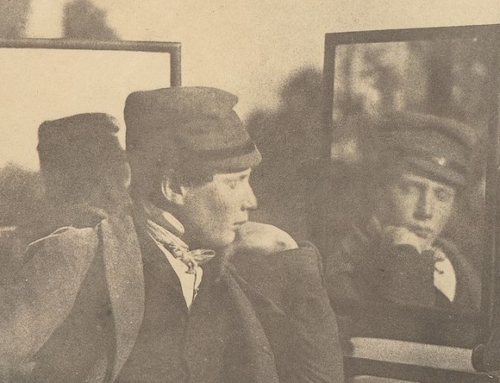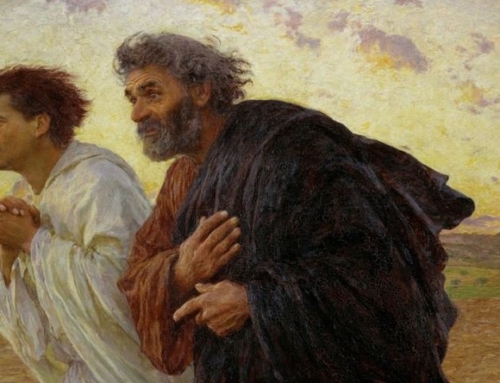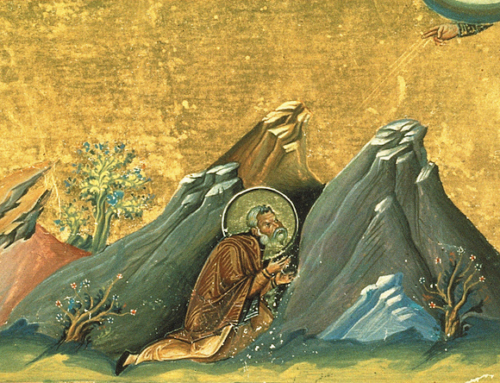The Prophet Isaiah proclaims “The grass withers, the flower fades,” yet, in the same breath, he assures us that the word of God stands forever, (Isa 40:8) a word that brings joy to all people (Lk 2:10). Here we are faced with a paradox of the Christian life: we are called to live joyfully in a wasteland; to gaze on the lilies of the field, and yet to long for something more (cf. Matt 6:28-33). The Gospel is a call to rejoice, but not in illusion; the Gospel is a call to enchantment.
C.S. Lewis lived in war-weary England, yet he writes as one living in the “shadowland,” a world pointedly imperfect, but pointing to something more. While others were growing disillusioned, betrayed by the promises of progress, Lewis was growing enchanted—learning to acknowledge the world’s sorrows, while embracing the good that remains. Lewis’ writing is an alternative to the familiar pattern we face of illusion and disillusion, in which our hopes are inevitably dashed. Those familiar with Lewis’ style will find it no surprise that his most enriching lesson in enchantment isn’t presented through talking lions or magic wardrobes, but ordinary bicycles. His essay “Talking About Bicycles” considers the delights of a bicycle, from adolescence to adulthood. In so doing, Lewis proposes four “Ages of Enchantment,” which serve as a roadmap for living Christian joy here in the shadowlands.
Lewis’ four Ages begin with the unenchanted age, described as when, “in early childhood, the bicycle meant nothing.” Before learning to ride, the bicycle is a meaningless tool among the many with which adults busy themselves. It is later in life, once one has learned to ride, that the bicycle becomes a source of joy. Lewis’ description of the initial enchantment of the bicycle is an almost fantastical scene: “at last spinning along on one’s own, early in the morning, under trees … like entering paradise…. [the bicycle] solved the secret of life.” But inevitably the joys of the bicycle are exhausted, leading to the third age: dis-enchantment. The bicycle, reduced to mere transportation, reveals “the prose of cycling.” Like that new job or the realities of religious formation, the romance that drew us in gives way to the drudgery of the day-to-day.
Most authors might stop here, the bicycle left to rust, forgotten by the dis-enchanted cyclist. But Lewis proposes a fourth age: the age of re-enchantment. Here he considers the bicycle in adulthood. With enough distance from the enchanted cycling of his youth, he understands the bicycle all anew. The age of re-enchantment is a twofold revelation: of the bicycle’s value, and its limitations. As Lewis puts it, the age of re-enchantment recognizes the “mirage of enchantment” while remembering that it was “a mirage of something.” The romance might be gone, but one is still left with something real.
Enchantment is all well and good for bicycles, but what about the things that matter? Enchantment is a pattern that appears in ten thousand places—jobs, relationships, our vocations. Undergoing dis-enchantment provides a corrective that moves us forward, drawing us, as Lewis might say, “further up and further in,” past the romance and into reality. More than an exercise in positive thinking, the four Ages of Enchantment describe a profound reality: the joy that enlivens us in this life can be both real and incomplete. Indeed, it is when we recognize it as incomplete that we look to our heavenly home.
The Apostles were called from their everyday lives to follow Christ, a call that would repeatedly break their expectations, as familiarity gave way to fulfillment. The Apostles were enchanted atop Tabor, only to be dis-enchanted at Calvary, purifying their beliefs in the nature of the Messiah. Only through witnessing the risen Christ did they, at last, understand him, not in human terms, but by heavenly insight.
Enchantment is the proper posture of the Christian life, at once awakening and tempering us, allowing us to see the grandeur of God present to creation while recognizing that creation points to something more. Christian Enchantment embraces a life-giving paradox, freeing us to delight in the shadowland—to maintain Christian joy—even amidst the most mundane.
✠
Image: Thomas Cole, Youth from the series The Voyage of Life







